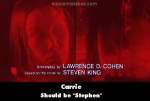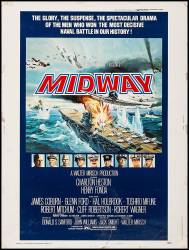
Factual error: In the final scene, where Fonda and Holbrook are looking over the carrier at the crowds on the dock, you can see that only the first rows of people are dressed in period clothes. The rest of the crowd are dressed as they would have been in 1976 when the film was made. Also, between them in the background is a yellow Ford Pinto.
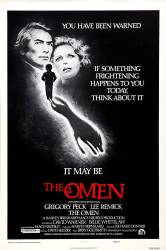
Factual error: In the cemetery, the skeleton of Gregory Peck's son is far too big to be that of a newborn, which it is supposed to be.
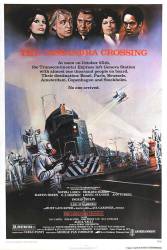
Factual error: The train consists of nine cars - six RIC cars of the Swiss Federal Railways (two 1st class with nine compartments each, two 2nd class with eleven compartments each, one 2nd class with twelve compartments, and one dining car between the classes), an MU sleeping car belonging to the CIWL (International Dining And Sleeping Car Company) between the two first class coaches, and at each end one older Swiss baggage car. The first class has 108 seats, the second class has 204 seats, and the sleeping car has 36 berths; so the train has space for 348 passengers - or 400, adding the 52 restaurant places. I wonder where they put 1,000 people on this train.
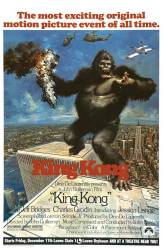
Factual error: When the Petrox engineers dump Kong into the pit filled with chloroform they haven't knocked him out - they've killed him. Chloroform vapour is heavier than air so Kong is breathing it in a pretty pure form - and it is lethal in concentrations as low as 40,000 parts per million. In the time it would take to render a gorilla unconscious by this method, it would die. This ignores the fact that liquid chloroform is a severe irritant and a contact poison, and its breakdown products include phosgene and hydrogen chloride, both deadly poisons. They might as well save themselves some time and use that dinky little bulldozer to fill in the pit.
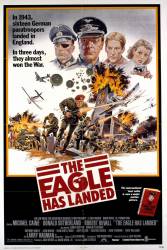
Factual error: In the aerial shot over rural Britain near the beginning of the movie, there are two modern cars visible. Too new to be early 40's models.
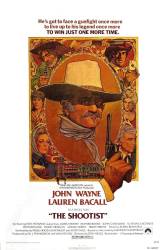
Factual error: The opening montage depicting Books's past exploits mentions a Colt .45 and shows a single action Colt revolver being fired. The date indicated on the screen is 1871. This revolver was not manufactured until 1873.
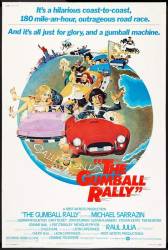
Factual error: As everyone races through Illinois, notice the very large mountains. Illinois is a very flat state.
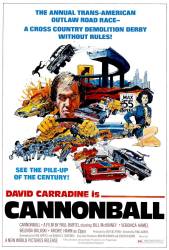
Factual error: Supposedly the Pantera was rigged to explode once it reached 160 mph. There are two problems here. First, a stock Detomaso Pantera could never reach 160, especially a smog-controlled "L" model with the old bias-ply Arriva tires, which is what they used in the movie. Second, the Dodge Polara police car that was tailing him closely and matching his speed, most DEFINITELY would not be able to achieve that speed.

Factual error: In the DVD theatrical trailer for "Carrie," Stephen King's name is misspelled. It is spelled "Steven".
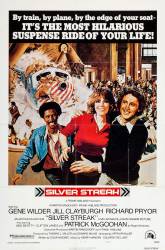
Factual error: When Richard Kiel is shooting at Gene Wilder on the train, you hear the "ping" of a "silencer" on the gun. However, Kiel is shooting a .357 magnum, which cannot be equipped with a silencer.
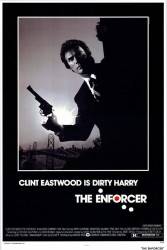
Factual error: When Harry shoots the last badguy in the tower with a LAW, the safety of the weapon is still on. The pin to arm it has to be pulled out. If it were armed, you would see a little pin, instead of little block, between Harry's little finger and his ringfinger. (01:28:35)
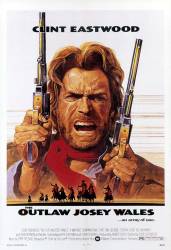
Factual error: The gatling gun that Josey Wales uses had the options of a 40 round magazine, or a 104 round drum magazine. Neither Josey or the Red Legs ever bothered to reload the weapon. The gun would have been empty after the 10 barrels revolved at most 10 times. Josey alone shoots for a couple of minutes straight.
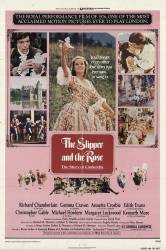
Factual error: In the scene where Cinderella is in her new room at the Prince's castle, the roses prominently displayed in the foreground are brightly coloured Hybrid Tea roses (the pointy ones) which were not bred until the early 20th Century. In the 1700s (panniered skirts and powdered hair) the roses would have been of looser formation, with softer colours, e.g pink or cream cabbage roses. (These roses also appear in later scenes.)
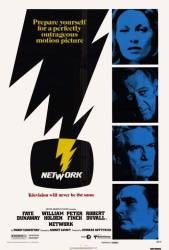
Factual error: In the story that Schumacher tells Howard Beale in the beginning of the film, he says that in 1951 he was sent on a remote to cover the opening of the lower level of the George Washington Bridge. The lower level, in fact, did not open until 1962.
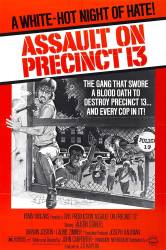
Factual error: In the scene where Julie, the secretary, has been discovered dead; the lieutenant approaches her, kneels down, and checks for a pulse with his thumb. As anyone with any medical knowledge should know, if you attempt to take someone's pulse with your thumb, you will get your own pulse and not the victim's.
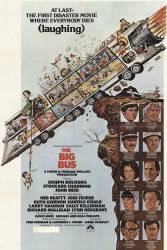
Factual error: At the start of the movie, the nuclear-powered articulated bus that is attempting a non-stop land run to Denver leaves New York City, but you can see the Rocky Mountains in the background.
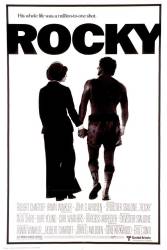
Factual error: In more than one scene you can hear the sounds of a steam locomotive chugging and blowing the whistle. Steam locos were almost entirely phased out by the early 60's, and none ran in Philadelphia at the time this movie was made.
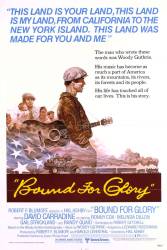
Factual error: About 3/4 into the movie, in the scene where Woody is looking for a place to sleep, he comes upon this other man in a bunk. The guy in the bunk asks Woody if he wants to share his blanket with him because it is cold. Arlo does. In the next scene, outside, it shows the steam locomotive, and to the left of the steamer is a diesel locomotive. It is a Western Pacific GE logo. The movie is 1936 and WP diesels didn't show up till 1953. I was there.

Factual error: Cagey Joe's pullover definitely looks more 1976 than 1926.
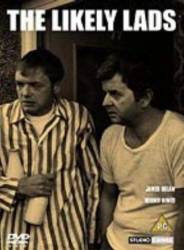
Factual error: The panels on a caravan are made of fibreglass so when Bob crashes his car into the caravan it wouldn't do as much damage as it did to Bob's car.
